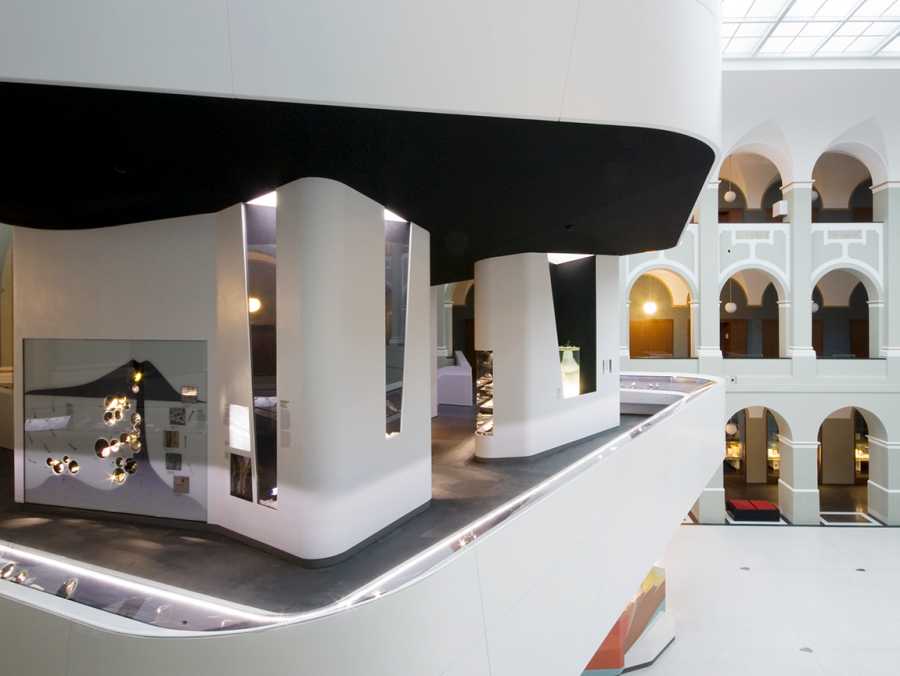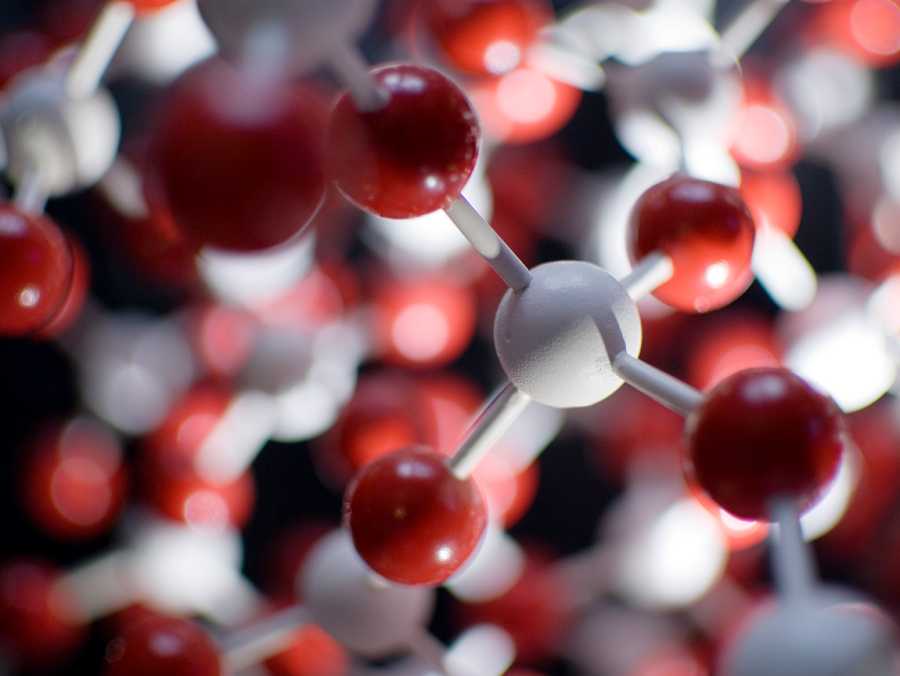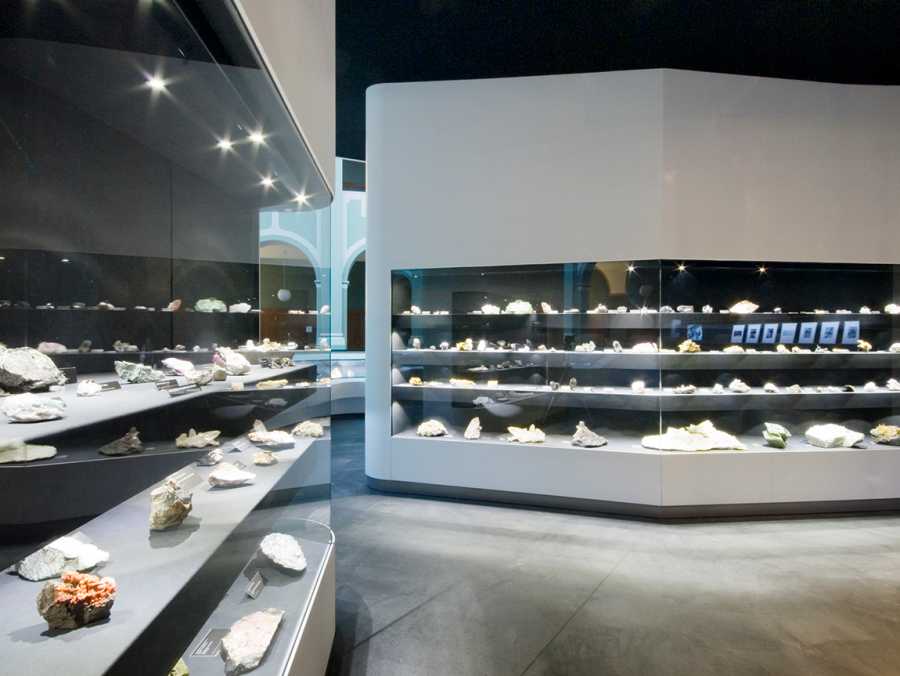Treasures of the Earth
Floor E (intermediate floor)
-

Images: Radek Brunecký -

-

The solid part of the Earth consists of rocks, which in turn are composed of minerals. Many geological processes within our planet and on its surface depend on the characteristics of the constituent minerals. Even the structure of the planet, which consists of core, mantle and crust, is determined by the chemical bonds of atoms within a mineral of different density and composition.
Minerals are everywhere in our life. The word “salary”, from “salaire” in French, reminds us of the history of salt as an essential food component and currency. Our construction materials are rocks and concrete made from gravel and marl. Modern civilisation depends on metals such as iron, copper, and platinum which are obtained from rare minerals. Gold and gemstones have enchanted us with their beauty and subjective value since the beginning of civilisation.
Water is involved in the formation of many minerals, and commonly required for the industrial extraction of metals. Many of the crystals shown here were formed deep in the Earth’s crust from hot solutions. At the surface, weathering of rocks supplies our soils with essential nutrients and can form new raw materials like bauxite.
What's to see?
- Crystals and Minerals: Atomic arrangements in the crystal lattice, the seven crystal systems, crystal characteristics, crystallization
- Gemstones
- Minerals of the Alps
- The crystal group from Tiefengletscher
- Mineral resources
- The crystal group from Tiefengletscher (Indergand Crystal)